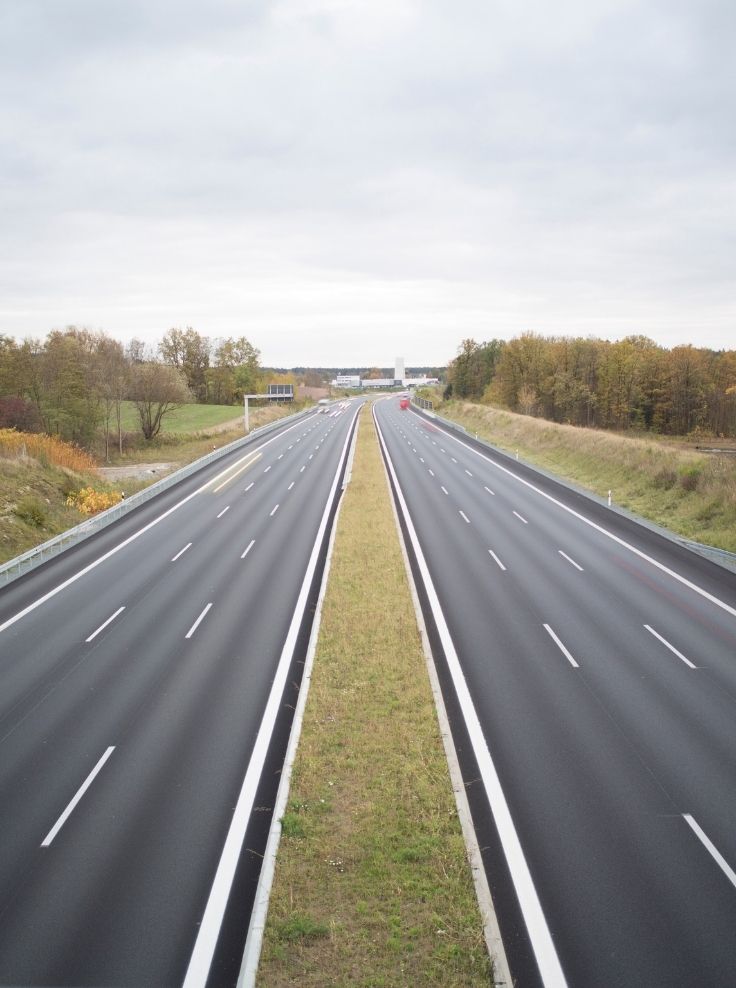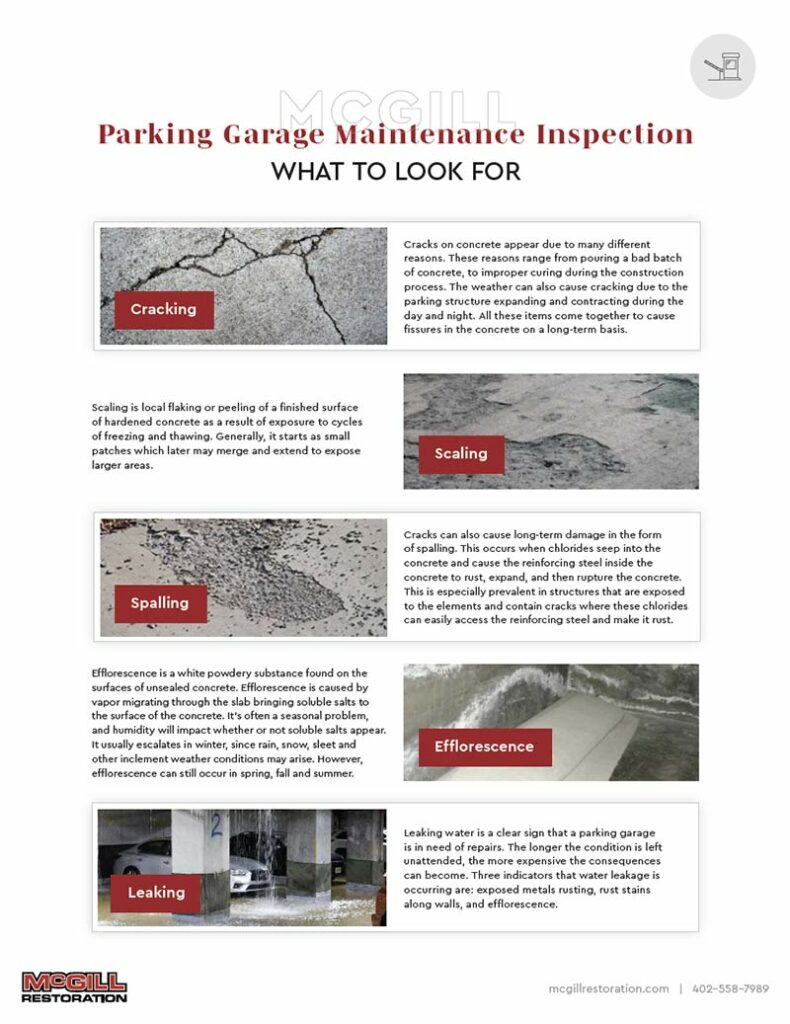Protect concrete surfaces with the right traffic coatings for your situation.
Concrete is an exceptional building material when protected. When unprotected however, the porous concrete will quickly absorb water and chemicals that can compromise structural integrity and cause erosion.
Traffic coatings are critical for the lifespan of these structures. It’s durable and can withstand constant abuse. Keeping water out of the concrete serves to maximize its performance and life. Increasing chemical resistance is also an important role played by traffic coatings.
When first considering coatings, logic says that every concrete surface should receive the thickest, most durable option. That’s not always the case however and several different coating materials exist to serve various scenarios.
The overarching goal is to minimize contact and absorption of water and chemical elements on the surface. At the same time, the concrete in some areas really needs to breathe so moisture can escape. Without the ability to breathe, vapor lock can trap moisture and accelerate damage to the interior of a concrete slab.
Choosing the right traffic coating for specific needs is important. At McGill Restoration, we make recommendations specific to each job while working closely with coating manufacturers to find the ideal solution.
The Right Coating for Each Job
Thicker is not necessarily better. The overarching goal is to minimize contact and absorption of water and chemical elements on the surface. At the same time, the concrete in some areas really needs to breathe so moisture can escape. Without the ability to breathe, vapor lock can trap moisture and accelerate damage to the interior of a concrete slab.
Choosing the right traffic coating for specific needs is important. At McGill Restoration, we make recommendations specific to each job while working closely with coating manufacturers to find the ideal solution.
Three Types of Traffic Coatings
For commercial parking structures and concrete structures in general, there are three distinct coating categories. More exist for specialized waterproofing membrane applications on DOT projects and rail bridges but they don’t quite fall into the traffic coating category. The exception on DOT roadways are epoxy coatings used on short sections to prevent skidding and reduce accidents under the category of high friction surface treatments.
Each coating fits different situations and each has variable pros and cons. The traffic coating lifespan and durability is often dependent on traffic and exposure to the elements. Cost also varies based on the coating material and durability.
#1 Penetrating Sealers
This is your basic low-viscosity, clear coat option. It doesn’t lay on thick but rather penetrates the top layer of concrete to seal against contact with the elements. There is no aesthetic change to the concrete and it will retain the original look.
Penetrating sealers offer the lowest levels of protection and are often due for renewals every 1-3 years. Although this option has the lowest level of protection, it’s often the most cost- effective for short-term investments.
The material breathes and allows moisture to escape which is critical in some situations. If the concrete has no moisture escape beneath the surface, a full coating can actually trap moisture and cause vapor lock. This is hard on the concrete and causes early breakdowns.
Penetrating sealers are widely used and are a great solution for many concrete (and masonry) surfaces.
#2 Cementitious Coatings
These offer more robust protection than a penetrating sealer and also retain the breathable quality for moisture escape. They offer high-level protection with good traction for vehicles and pedestrian traffic.
Cementitious coatings retain the look and appeal of a concrete surface. The coating style also comes in a variety of colors to get the right look for a commercial structure. If you want a more durable traffic coating and still require breathability, cementitious is often the preferred route. Having added traction and various color options is an added bonus that serves many structures well.
#3 Urethane/Epoxy Coatings
The highest level of protection comes from urethane and epoxy coatings. Installation requires 3-4 separate coats that result in a thick protective layer beneath a final top coat. Full coverage means these are not breathable but they are the most durable and waterproof traffic coating option. If moisture has an escape route, this is often the best investment for serious protection.
Urethane/epoxy coatings have a glossy finish that will change the look of concrete. The materials are elastic and will flex and move with the concrete deck. Damage can occur from snow plow blades and other similar hard-edge equipment. Otherwise, the material is very durable and withstands vehicular and pedestrian traffic very well.
McGill Restoration Traffic Coating Projects
We are certified installers for the most common traffic coating systems. Our crews specialize in traffic coating installations and we have a long list of projects with different material applications. On many projects, we are the lead contractor, handling every aspect of restoration work. This includes the final traffic coating installations.
On some projects, we work as a subcontractor specializing in traffic coatings. Few companies have the right equipment for mixing and applying according to exact manufacturer specifications. We not only have the equipment but we also have crews trained and experienced in traffic coating installations.
Read these examples where traffic coatings were installed:
Harney Street Parking Garage – This was a large-scale restoration project with significant concrete work completed. After restoring the structural elements and decks, traffic coatings were applied to complete the job.
U.S. Bank Helena – Another job with major concrete restoration, a penetrating sealer was added to the top deck. This approach helped maintain a moisture escape plan to avoid vapor lock in the concrete deck.
Brandeis Parking Garage – This was a huge project with major surface and vertical concrete restoration. Over 400,000 sq. ft. of coatings were applied to wrap up the job and return the parking structure to open status. Durable coatings mean the concrete surfaces will last and perform for many years on this important local structure.
Ready to explore traffic coating options for your commercial structure? Start a bid with our Nebraska or Oklahoma teams and launch your project.



